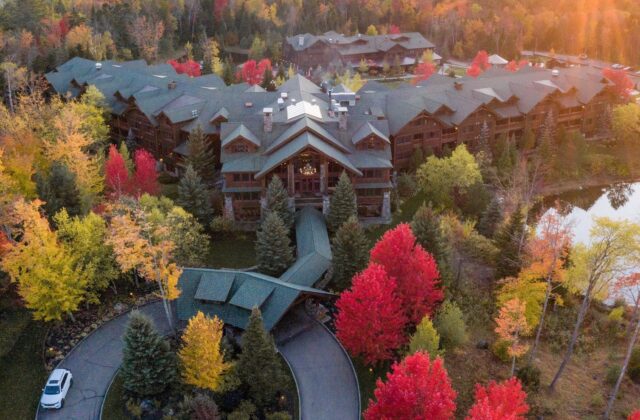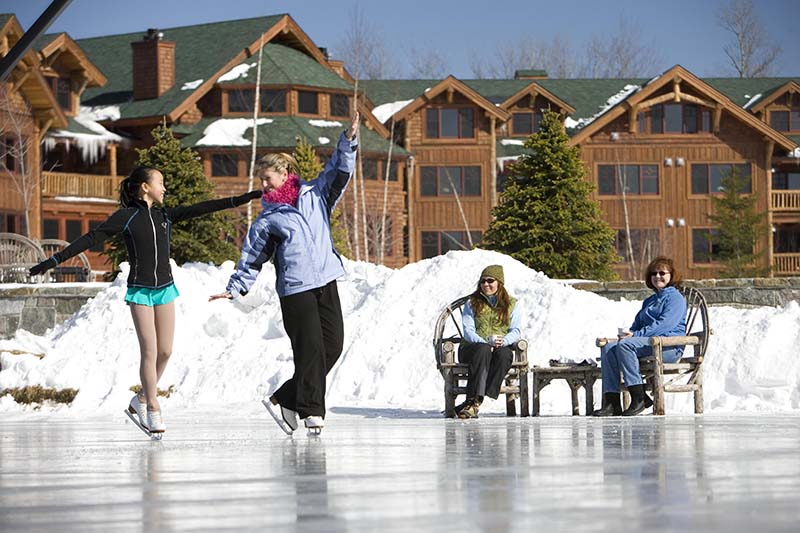Expert Tips For A Mid-Pandemic Wellness Tune-Up

After 10 long months of staying home, the new routines we adopted to stay active and healthy at the start of the COVID crisis are growing old. And while the arrival of vaccines brings hope for a return to “normal” in the not-too-distant future, we’re not there yet. It’s time for a reset. We asked the pros at top resorts (and one window treatment expert) to share their tips for a mid-pandemic wellness tune-up, and here’s what they had to say.
Head outdoors. Don’t let winter weather keep you from exercising outdoors, advises Wayne Cowan, activities director at Whiteface Lodge, a mountain resort in the two-time Winter Olympics host town of Lake Placid, New York. His suggestions:

- A cold-weather workout helps ease seasonal depression while offering great cardio benefits and higher calorie burn than exercising in warmer temperatures.
- Make it fun by trying something new, like snowshoeing or a winter hike. Snowshoeing in particular can burn about 500 calories an hour on average—twice as many as walking, and the higher leg lift it requires means it also might beat running.
- Warming up with a few stretches is crucial. Here are a few to optimize your snowshoeing or hiking adventure:

-
- Standing quad stretch. Standing up straight, bend your right leg up behind you and grab hold of your foot with your left hand. Count to 30, then lower your leg and repeat with the other for three repetitions.
- Forward bend: From a standing position, bend forward at your hips, keeping your legs straight as you lower your hands until they reach your ankles. Hold for 30 seconds to stretch your calves, hamstrings and hips. Repeat three times.
- Forward lunge: Elevate your left foot at least 12 inches, resting it on a stair, bench or even a large rock. Staying vertical and squaring your hips, extend your right leg behind you, squeezing your right glute, then reach your right arm overhead to deepen the stretch. Hold 30 seconds, then repeat on the other side for three repetitions.

Raise your (golf) game. To help golfers keep primed for their return to the course, Laird Small, director of the Pebble Beach Golf Academy at Pebble Beach Resorts, offers these simple tips:
- Maintain rotational flexibility. The tension created in this exercise opens up the chest and can help add much needed rotation to your swing.
- Face a doorway.
- With your shoulders back, extend your right arm out (left arm if you’re left-handed) and place your hand flat against the door frame. It should be at shoulder height.
- Hold your hand in place and turn your upper body to the left (to the right if you’re left-handed). Your trail arm will stay behind you.

- Keep your head down. This exercise will train you to keep your body in position throughout your swing and keep your head down from back swing to follow-through.
- Fold a hand towel three to five times.
- Stand facing a wall and get into golf posture. You should be at least one foot from the wall.
- Lean forward and place your forehead against the wall, cushioned by the towel.
- Cross your arms over your chest, with the fingertips of each hand touching the opposite shoulder.
- Proceed to make turns back and forth, starting with your left shoulder down and your right shoulder up.
- Continue for 30 seconds to one minute while keeping the towel in place.
- Add width to your swing. A simple exercise like this will assist in arm extension and position you for the top of your back swing.
- Stand in the middle of a door frame.
- Take your golf posture.
- Reach for the top of the door jamb.

Share the gift of massage. LaRae Verros, spa director at Scottsdale’s Sanctuary on Camelback Mountain Resort & Spa, takes the intimidation out of at-home massage with “no-pressure” guidelines for novices:

- Communication is key. The partner receiving the massage should be comfortable asking for what they want and need and give positive reinforcement, while the partner giving the massage should ask for feedback and listen with an open mind. Bonus: The benefits of communicating better will last long after the massage ends.
- In particular, communicate about pressure. Not everyone enjoys the same amount of intensity in their massage, so be sure to give and accept feedback as you work together to find the perfect level of pressure.
- A massage table is great but not necessary, and the same goes for creating a quiet massage space. Instead, keep it flexible and fun—think snack, foot rub and a favorite TV show while you relax on your couch in your comfiest clothes.
- When it comes to massage technique, slower is better. Also, don’t overuse your thumbs. It’s not sustainable and your strength will burn out quickly.

Invite the light in. Research supports the health benefits of natural light—increasing vitamin D, warding off depression and improving sleep are just a few. And with homes now doubling as workplaces and classrooms, maximizing the natural light that flows into one’s home is key to wellbeing and productivity, according to Graber, a Springs Window Fashions company. The Graber Visualizer lets individuals experiment with thousands of window treatment options and combinations by uploading a photo of their own windows to the free online tool. Users can play with light, privacy and opacities, virtually raising and lowering blinds and shades until they find the perfect level of natural light
 Travel Dreams Magazine
Travel Dreams Magazine